Selling Sustainability
The headlines are starting to read like News of the Weird. Coke just announced a partnership with Wal-Mart to sell T-shirts made of plastic bottles. Hotels no longer change your sheets and towels, Banana Republic is listing ingredients for their clothes and Whole Foods is going to start charging you for grocery bags. Have these folks gone insane? Hardly.
While companies are making changes in the name of sustainability, these initiatives target key cost centers, public relations challenges and other corporate headaches. Whether you call it making lemonade out of lemons or turning that frown upside down, sustainability is not only good marketing, but it appears to be providing cover for a lot of business woes as well.
A year ago, Corporate America was proclaiming sustainability the next great wave in bottom-line cost cutting. Businesses could increase profits and save the world at the same time. This turned out to be easier said than done. While there have been some very successful efforts, the savings from changing light bulbs, digitizing paper processes and planting green roofs for insulation have proven much smaller than early estimates suggested, with payback periods and returns on investment far too long and low for the comfort of Wall Street financiers.
Sustainability initiatives, however, are proving highly effective at managing the biggest business headache of all. No, not shrinking margins, rising costs or government regulation. Sustainable business practices are up there with baby seals and children when it comes to getting your customers to trade out low-cost, poor service for social consciousness.
Doing Your Small Part
Think about the last time you stayed in a hotel. There probably was a little tag on the bed. It had a picture of whales swimming in the ocean and verdant fields. It was emblazoned with the words, “Together we are saving the Earth.” In small writing, the card let you know that unless you made a specific request, the hotel would not be changing your sheets or providing new towels for the duration of your stay. You felt good about doing your part.
The environmental impact of a hotel linen recycle and reuse program, according to Sage Blossom Consulting, a specialist in “greening the hospitality industry,” averages 6,000 gallons of water and 40 gallons of chemicals a day for a mid-size, 150-room hotel. Together, you certainly are saving the Earth. There is also a secondary benefit to the hotel for not changing your sheets and towels. Factoring in labor, that same 150-room hotel saves $1.75 per day just under $50,000 a year.
This is magic, right? The hotel does less work, provides you fewer services and they make more money! It gets better.
Buying Your Small Part
As of Earth Day, April 22, 2008, Whole Foods will no longer offer plastic grocery bags. While you can still get the old faithful brown paper sack, Whole Foods, along with many other retailers, are encouraging you to bring your own bag or buy one there. Whole Foods has them available for purchase from 99 cents to $7.99. Last year, Hermes introduced a $960 reusable grocery bag. Even celebrities like Keira Knightley and Madonna are carrying the Anya Hindmarch “I am not a plastic bag” bag. There is now an entire industry dedicated to selling you bags to carry your groceries.
Why are consumers by the millions willing to trade in their free plastic bags for a 99-cent tote? Because it is “sustainable.” The magic of sustainability is not that it has suddenly revealed new cost-savings possibilities, radiantly bathed in a Capra-esque glow. Hoteliers have long known that laundering bed sheets and towels was costing them a lot of money. I’m also quite certain that at some point, a grocer somewhere said, “If I only had a nickel for every bag I send out of here… ” These initiatives are almost painfully obvious.
Sustainability allows businesses to do the impossible. They reduce their level of service, charge you more for once low-cost or free items and, in some cases, sell you inferior goods. They are able to do it because these practices save trees, introduce fewer chemicals into the environment and, most importantly, leave the consumer feeling that they are doing their simple, low-investment part to save the world.
And they are. These initiatives, by and large, are having an impact on the environment. More impressively, consumers are changing deeply ingrained behaviors that, over time, will save millions of gallons of water and keep millions of pounds of waste out of landfills.
Work That Magic
Reduce costs, increase sales and eliminate labor-intensive practices that keep your team from serving your customers. Where do you sign up? There are three key steps to identifying how to put the magic of sustainability to work for you:
1. In the above examples, businesses identified small costs a plastic bag, a set of clean sheets that were repeated over and over until they represented a significant cost to their businesses.
2. Imagine how your business would operate if you didn’t offer those services. Identify the ones you can’t ever imagine your customers doing without or, even better, paying for.
3. If sustainability can provide the rationale for change, you’ve got a winner!
So, what are you doing every day that, by the end of the year, costs you a lot of money? The obvious answers are already being addressed by the industry. Many businesses have found ways to reduce their water bills by recapturing water or using drip irrigation. Chemicals and labor for maintenance are another major category that is being addressed by reducing average inventory and ordering what you need to get through a couple of weeks, not the entire season.
Looking Beyond the Costs
But cutting costs is only half the story. The other half is identifying those changes that, all things being equal, your customers would never put up with. Over the course of the year, your customers use several hundred dollars worth of trunk liners. Is this your next profit center? Can you charge customers for a nicer, reusable trunk liner? Or do you minimize the cost by providing a reusable liner for free that remains as a permanent ad in your customers’ trunks?
Getting more creative, perhaps there is a new market for paid landscape advice. Many garden centers have struggled with the question of whether to charge for landscape plans drawn on-site, in your store. After all, you are the plant experts; it is your job to provide this information. Sustainable design, on the other hand, is a whole new category. If organic produce and biodegradable laundry detergent cost more, why shouldn’t sustainable landscape information?
How about plant tags? Made of expensive plastics, the strip tags you put on shrubs and stake tags you hand stick in annuals and perennials are the bane of your existence, aren’t they? Printers can jam, and the cost of tag stock adds up over the course of a year. As do the hours of labor required to tag your inventory.
Now, you are probably thinking that tagging is the easiest way to ensure your cashiers ring these products up correctly. It also allows you to individually price a wide variety of inventory, and your customers never seem to read your signs anyway. Admittedly, discontinuing tags probably won’t work very well in your specimen woody plant “collector’s garden,” but it might be just the thing to do with your color crops. Especially if you post a new sign that lets your customers know, “Just by reading this sign, you have helped eliminate thousands of plastic price tags from local landfills.”
Right now, it’s May. You are busy receiving and selling plants, not solving the problems of the world. However, as you go through your day, note those things that you do again, and again and again. When you come up for air sometime in June, you may just find you’ve identified your next big sustainability initiative, one that you never thought possible before!

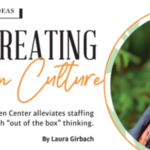



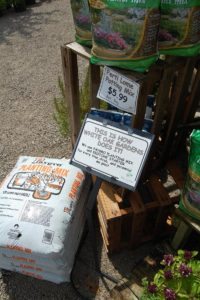
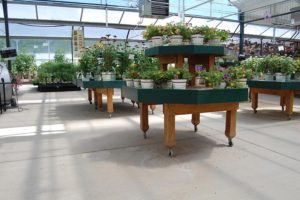



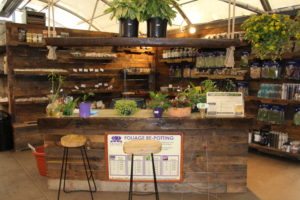

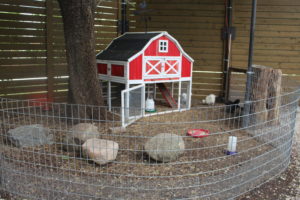




 Videos
Videos





